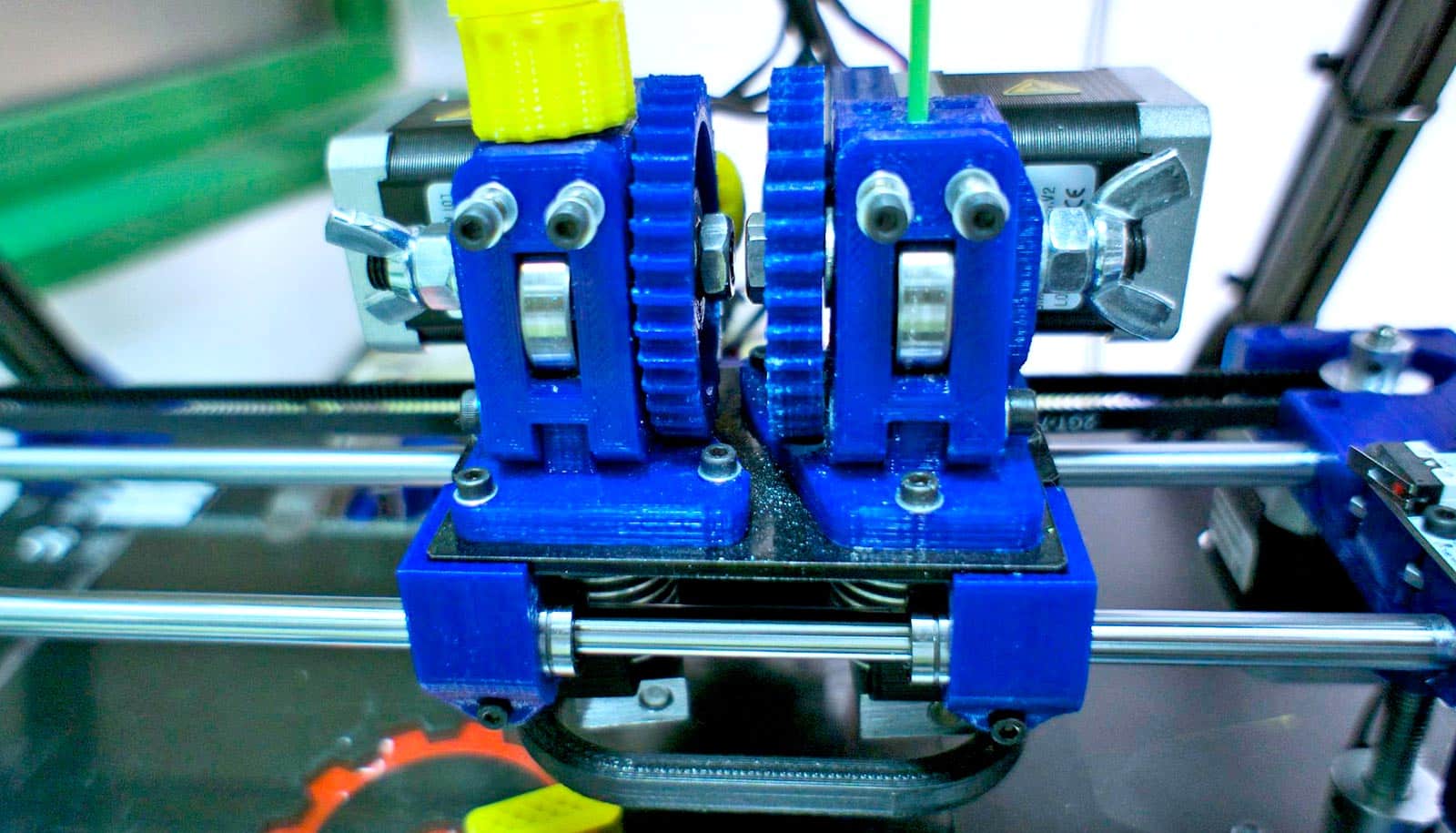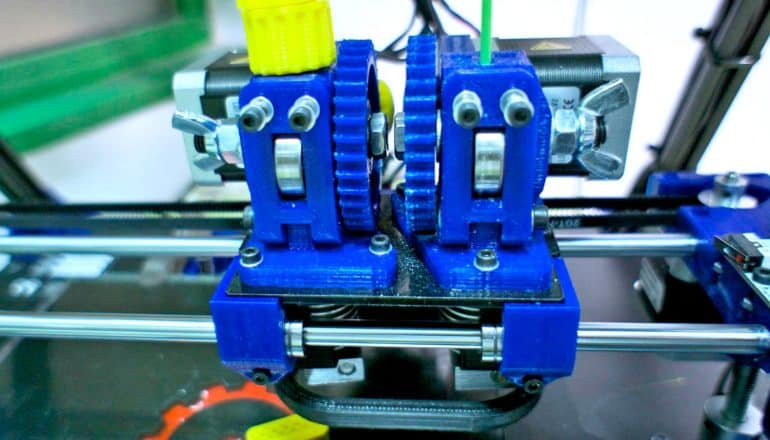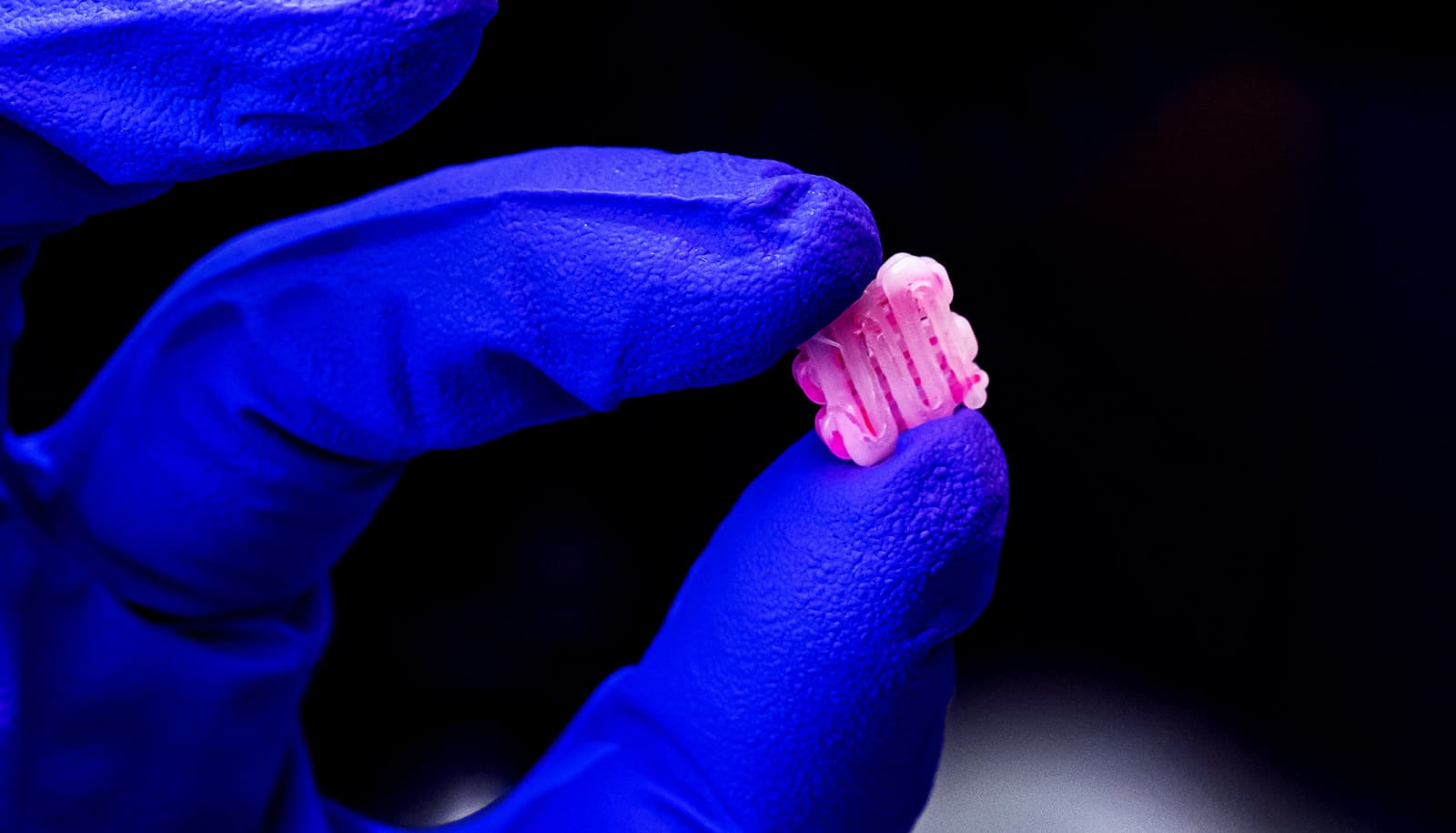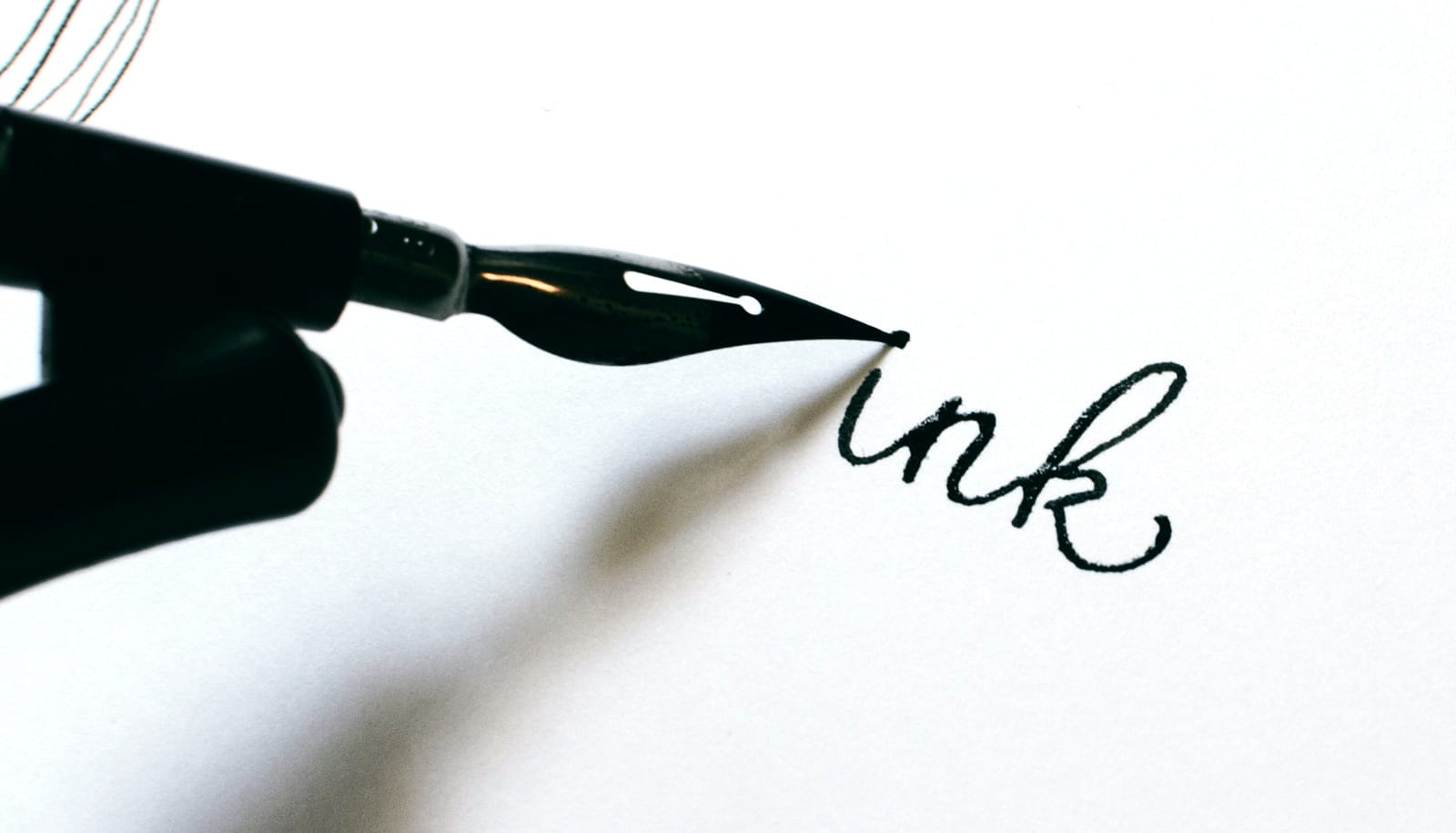
(Credit: Rede Galega de Biomateriais/Flickr )
‘Bio-ink’ could form a scaffold for growing human tissue
A "bio-ink" for 3D-printed materials could serve as scaffolds for growing human tissues to repair or replace damaged ones in the body, say bioengineers.

A “bio-ink” for 3D-printed materials could serve as scaffolds for growing human tissues to repair or replace damaged ones in the body, say bioengineers.
Bioengineered tissues show promise in regenerative, precision, and personalized medicine; product development; and basic research, especially with the advent of 3D printing of biomaterials that could serve as scaffolds, or temporary structures to grow tissues.
Hyaluronic acid, a natural molecule in many tissues throughout the body, has many properties ideal for creating customized scaffolds, but lacks the durability required. The researchers used modified versions of hyaluronic acid and polyethylene glycol to form a gel that gains strength via chemical reactions and would serve as a scaffold.
“Instead of an ink color for an inkjet printer, we want the mixture to have properties that are right for specific cells to multiply, differentiate, and remodel the scaffold into the appropriate tissue,” says senior author David I. Shreiber, a professor who chairs the department of biomedical engineering in the School of Engineering at Rutgers University-New Brunswick. “We focus on the stiffness of the gel and scaffold binding sites that cells can latch onto.”
Groups of cells in the body generally make their own support structures, or scaffolds, but scientists can build them from proteins, plastics, and other sources, according to the National Institutes of Health.
Shreiber and lead author Madison D. Godesky, who earned a doctorate at Rutgers, envisioned a system where hyaluronic acid and polyethylene glycol serve as the basic “ink cartridges” for 3D printing. The system would also have other ink cartridges featuring different cells and ligands, which serve as binding sites for cells. The system would print gel scaffolds with the right stiffness, cells, and ligands, based on the type of tissue desired.
“Both the stiffness and the binding sites provide important signals to cells,” Godesky says. “What especially distinguishes our work from previous studies is the potential to control the stiffness and ligands independently through combinations of inks.”
The study appears in the journal Biointerphases.
Source: Rutgers University
The post ‘Bio-ink’ could form a scaffold for growing human tissue appeared first on Futurity.
Share this article:
This article uses material from the Futurity article, and is licenced under a CC BY-SA 4.0 International License. Images, videos and audio are available under their respective licenses.
Related Articles:
Grooved scaffolds for live cells could heal injuries
Feb. 11, 2020 • futurityHydrogel bio-inks keep therapeutic proteins in place
June 6, 2019 • futurityLinks/images:
- https://www.futurity.org/tissue-engineering-scaffolds-2277952-2/
- https://www.futurity.org/tissue-engineering-textiles-1139842-2/
- http://dx.doi.org/10.1063/1.5126493
- https://news.rutgers.edu/superior-%E2%80%9Cbio-ink%E2%80%9D-3d-printing-pioneered/20200207#.XkGlRWhKi70
- https://www.futurity.org/bio-ink-3d-printed-scaffolds-hyaluronic-acid-2278672-2/
- https://www.futurity.org


